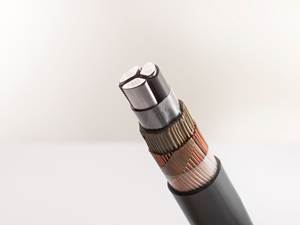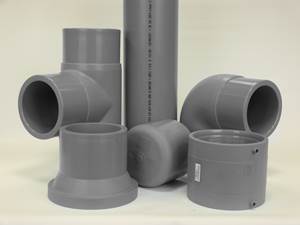Upward Pricing for PS, PVC and More
Higher global oil prices and derivative feedstocks are among the factors driving resin price increases in PS, PVC, PET and nylons.
Higher global oil prices and derivative feedstocks are among the factors driving resin price increases in PS, PVC, PET and nylons.
Here we are into the shortest month of the year and already the industry is seeing price increases either being implemented or about to be. Just last week, I tried to tackle what is taking place and how things might turn out, at least going into second quarter, in the typically volatile polyolefins pricing arena.
Meanwhile, in addition to supply/demand fundamentals, which vary depending on the resin, the combination of higher global prices of crude oil and key resin feedstocks, along with planned and unplanned production outages, are major factors driving price initiatives for other resins as well. Polystyrene and PVC are among them, and Mark Kallman, v.p. of client services for engineering resins, PS, and PVC at Resin Technology, Inc., recently offered an update.
• PS: Driven by January benzene contracts that moved up by nearly 60ȼ/gal, PS prices moved up 5ȼ/lb last month. Moreover, PS suppliers are out with an 8ȼ/lb price hike for this month, and Kallman says, they are likely to get at least 6ȼ/lb of this increase. Global supply constrictions in benzene, styrene monomer and butadiene (which affects HIPS) are behind the upwards movement. A clear indication of this widespread situation is that there have been no low-priced PS imports coming in. Still, Kallman ventures that some softening in PS prices is likely as early as April.
• PVC: Interesting, but PVC prices which were flat in January, as they were for eight months of 2016, are expected to move up 3-4ȼ/lb this month, according to Kallman. This would reflect suppliers’ February 4ȼ/lb hike. In addition, PVC suppliers are now out with a 3ȼ/lb price increase for March.
Driving this upward movement are the typically late-settling monthly ethylene contracts, expected to settle up by 2ȼ/lb for January, following a 2ȼ/lb hike in December. Due to both planned and unplanned outages, a third such ethylene contract increase is likely for this month, according to Kallman.
Still, if PVC suppliers get their 4ȼ/lb increase in place, the ‘new’ March 3ȼ/lb hike might be pushed off. Although PVC suppliers ended last year with strong inventories, some supply constrictions were likely due to some domestic PVC plant maintenance turnarounds during the first quarter. This would occur nearly mid-way into this quarter, as PVC processors are looking to stock up for the startup of construction season in second quarter.
At this juncture, it appears that there are adequate supplies for domestic consumption but little for exports, according to Kallman. He ventures there’s potential for some easing on PVC prices once ethylene and PVC outages are completed or resolved.
At the same time, however, there are some industry projections that this year’s construction season will be a strong one. If this pans out, the PVC price hikes now expected to go through, will be maintained for a while.
Meanwhile, other resin price increases underway include PET and a broad range of nylons, driven primarily by spiking feedstock costs.
• PET: January’s average cost of feedstocks (including PTA, MEG, and paraxylene), according to PetroChemWire (PCW) was 55.8ȼ/lb, up 3ȼ/lb from December. Prices of domestic bottle-grade PET in January averaged 56.3, and by February 3, PET prices has moved up to 58ȼ/lb (delivered Chicago basis), according to Xavier Cronin, senior editor of PCW’s Daily PET Report. He confirmed that DAK Americas, for one, successfully increased its PET resins by 5ȼ/lb last month.
• Nylons: In this arena, several key suppliers have issued hefty, across-the-board price increases—generally on the order of 12-13ȼ/lb--for nylon resins and compounds, ranging from nylon 6 and 66 to high-temperature and specialty nylons like nylon 12 and beyond, effective this month or as contracts allow. Generally, the increases are on the 12-13ȼ/lb range. Included are: Ascend Performance Polymers; BASF; Solvay; DuPont Performance Polymers, and a Evonik.

Related Content
Packaging Waste Will Become Composite Decking
New partnership will incorporate process waste into wood-alternative decking.
Read MoreChemical Recycling Process for Crosslinked PE
Borealis announces capability to produce recycled PE for use in wire & cable, infrastructure industries.
Read MoreArtificial Intelligence Enables Smarter Sourcing
Westfall Technik has adopted Arkestro’s predictive procurement software to wring savings and more reliable deliveries from a historically challenging supply chain.
Read MoreBorealis and Partners Move Forward with Crosslinked PE and PP Pipes Based on Renewable Feedstock
The company’s partnerships in these new drop-in solutions significantly advances carbon footprint reduction.
Read MoreRead Next
Advanced Recycling: Beyond Pyrolysis
Consumer-product brand owners increasingly see advanced chemical recycling as a necessary complement to mechanical recycling if they are to meet ambitious goals for a circular economy in the next decade. Dozens of technology providers are developing new technologies to overcome the limitations of existing pyrolysis methods and to commercialize various alternative approaches to chemical recycling of plastics.
Read MoreUnderstanding Melting in Single-Screw Extruders
You can better visualize the melting process by “flipping” the observation point so that the barrel appears to be turning clockwise around a stationary screw.
Read MoreWhy (and What) You Need to Dry
Other than polyolefins, almost every other polymer exhibits some level of polarity and therefore can absorb a certain amount of moisture from the atmosphere. Here’s a look at some of these materials, and what needs to be done to dry them.
Read More


















.png;maxWidth=300;quality=90)







